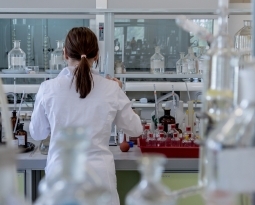Luck should have nothing to do with it: Lessons from Hurricane Harvey about Resilient Technology
Restoration projects continue in the aftermath of Hurricane Harvey which had devastated Houston’s infrastructure. Although the destruction was not as bad as it could have been, experts believe that with the increasing likelihood of future deadlier storms, the Lone Star state should invest in more resilient technology. Karl R. Rábago, executive director of the Pace Energy and Climate Center, said in regards to the disaster in Houston, “We’ve dodged a bullet. We should honor our good fortune by not relying on it next time.”
This resilient technology should be directed towards flood management, sustainable power, and ensuring that critical services like fire stations and hospitals could continue to operate in the midst of disasters. During Hurricane Harvey, the W.A. Parish Electric Generating Station, one of the largest power plants in America, had been unable to generate power because of flooding. Water had clogged the station’s conveyor belt, preventing coal from moving throughout the plant and from generating electricity. Consequently, for the future, Joshua D. Rhodes, a postdoctoral researcher at Austin’s Energy Institute at the University of Texas, said, “We’re going to design power plants and oil and gas refineries with flooding in mind. Anything you don’t want to get wet, you move up.”
Diversity of power sources are important as well. Daniel Cohan, a civil and environmental engineering associate professor at Rice University, asserts that Texas should invest in other types of power technology, not just coal and nuclear. Cohan does not believe the solution to resilient technology is to have “a 90-day mountain of coal next to the power plant.” Rather, renewable energies should also be considered.
Additionally, microgrids could help maintain the utility grid, especially near critical services. Because they are local, onsite power generators that are disconnected from traditional power grids, microgrids can still supply electricity into neighborhoods even when the main grids are cut off. According to the Department of Energy, “Depending on how it’s fueled and hot its requirements are managed, a microgrid might run indefinitely.”
Are you engaging in R&D to build more resilient technology? You could be eligible for the R&D Tax Credit and can get up to 14% on your R&D expenses, even if your experiments were not successful. To find out more, please contact a Swanson Reed R&D Specialist today.
Who We Are:
Swanson Reed is Texas’ largest Specialist R&D tax advisory firm, offering tax credibility assessments, claim preparation, and advisory services. We manage all facets of the R&D tax credit program in Texas, from claim prep & audit compliance to claim disputes.
Swanson Reed regularly hosts free webinars and provides free IRS CE and CPE credits for CPA’s. For more information please visit us at www.swansonreed.com/webinars or contact your usual Swanson Reed representative

















